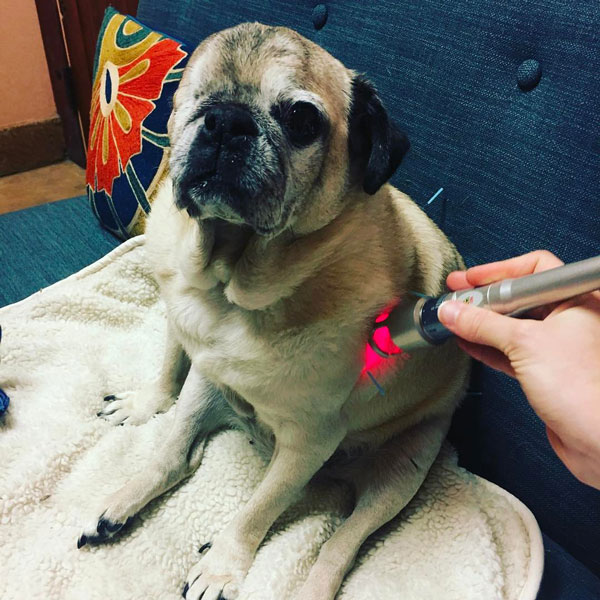Laser Therapy is proven to bio-stimulate tissue repair and growth. The Laser accelerates wound healing, and decreases inflammation, pain, as well as scar tissue formation. When it comes to pain management, Class IV Lasers are a side effect free and non-addictive treatment that provide dramatic results.
Positive Effects of K-Laser
- Improves and promotes healing
- Reduces pain and spasm
- Increases joint flexibility
- Reduces symptoms of osteoarthritis
- Improves peripheral microcirculation
- Detoxifies and eliminates trigger points
- Advanced pain relief
Benefits to the Patient
- Faster patient satisfaction
- Deeper penetration than Class III lasers
- Delivers more laser energy to the target tissues
- Faster treatment times
- Effective treatment in 3-8 minutes
- Faster patient recovery time

Top Ten Biological Effects of Laser Therapy (LT)
Clinical studies and trials of laser therapy technology indicate the following beneficial effects of laser therapy on tissues and cells:
- Anti-Inflammation – Laser Therapy has an anti-edema effect as it causes vasodilation, but also because it activates the lymphatic drainage system (drains swollen areas). As a result, there is a reduction in swelling caused by bruising or inflammation.
- Anti-Pain (Analgesic) – Laser Therapy has a very beneficial effect on nerve cells by blocking pain transmitted by these cells to the brain and decreasing nerve sensitivity. Also, due to less inflammation, there is less edema and less pain. Another pain blocking mechanism involves the production of high levels of pain killing chemicals such as endorphins, enkephalins, and opiods from the brain and adrenal gland.
- Accelerated Tissue Repair and Cell Growth – Photons of light from lasers penetrate deeply into tissue and accelerate cellular reproduction and growth. The laser light also increases the energy available to the cell by increasing ATP production so that the cell can take on nutrients faster and get rid of waste products. As a result of exposure to laser light, all cells, including the cells of tendons, ligaments and muscles are repaired faster.
- Improved Vascular Activity – Laser light will significantly increase the formation of new capillaries in damaged tissue; that speeds up the healing process, closes wounds quickly, and reduces scar tissue. In addition to angiogenesis, it causes temporary vasodilatation, an increase in the diameter of blood vessels.
- Increased Metabolic Activity – Laser Therapy creates higher outputs of specific enzymes, greater oxygen and food particle loads for blood cells.
- Trigger Points and Acupuncture Points – Laser Therapy stimulates muscle trigger points and acupuncture points on a non-invasive basis, providing musculoskeletal pain relief.
- Reduced Fibrous Tissue Formation – Laser Therapy reduces the formation of scar tissue following tissue damage from cuts, scratches, burns or surgery.
- Improved Nerve Function – Slow recovery of nerve functions in damaged tissue can result in numbness and impaired limbs. Laser light will speed up the process of axonal regeneration, nerve cell reconnection, and increase the amplitude of action potentials to optimize muscle action.
- Immunoregulation – Laser light has a direct effect on immunity status by stimulation of immunoglobulins and lymphocytes. Laser Therapy is absorbed by chromophores (molecule enzymes) that react to laser light. The enzyme flavomono-nucleotide is activated and starts the production of ATP (adenosine-tri-phosphate), which is the major carrier of cell energy and the energy source for all chemical reactions in the cells.
- Faster Wound Healing – Laser light stimulates fibroblast development (fibroblasts are the building blocks of collagen, which is predominant in wound healing) in damaged tissue. Collagen is the essential protein required to replace old tissue or to repair tissue injuries. As a result, Laser Therapy is effective on open wounds and burns.

